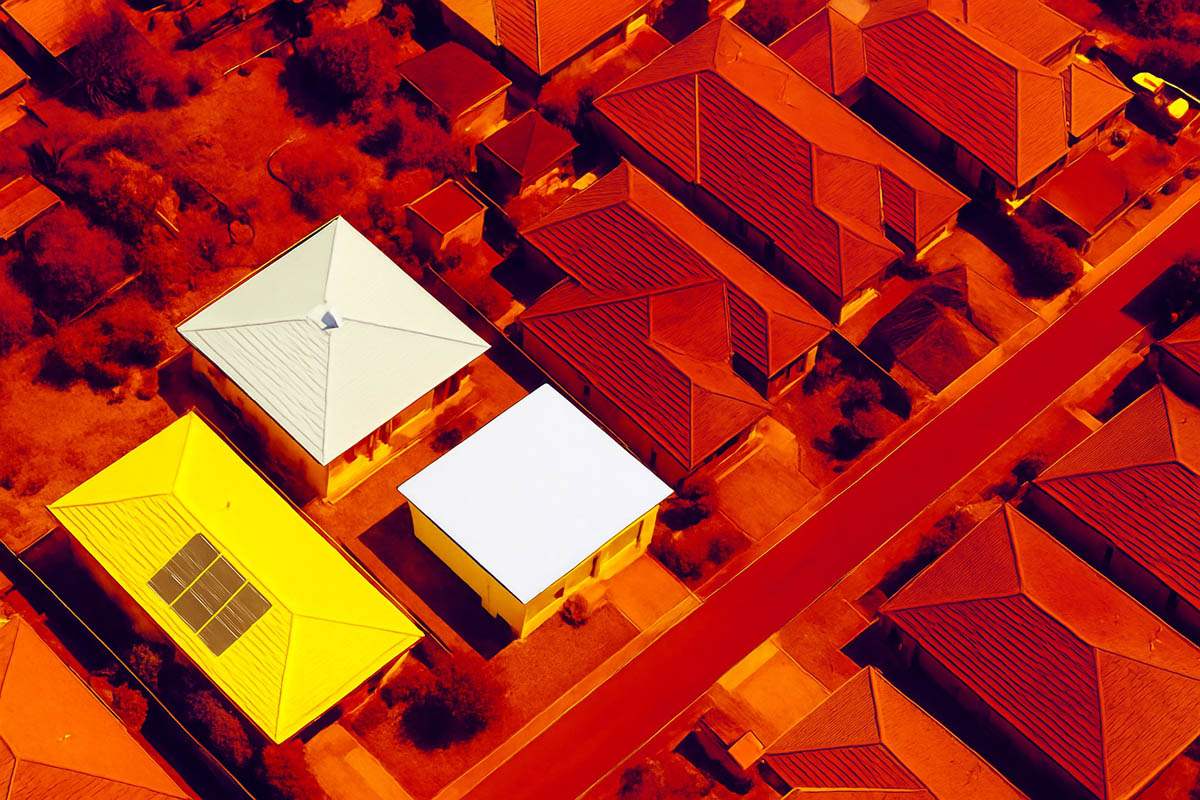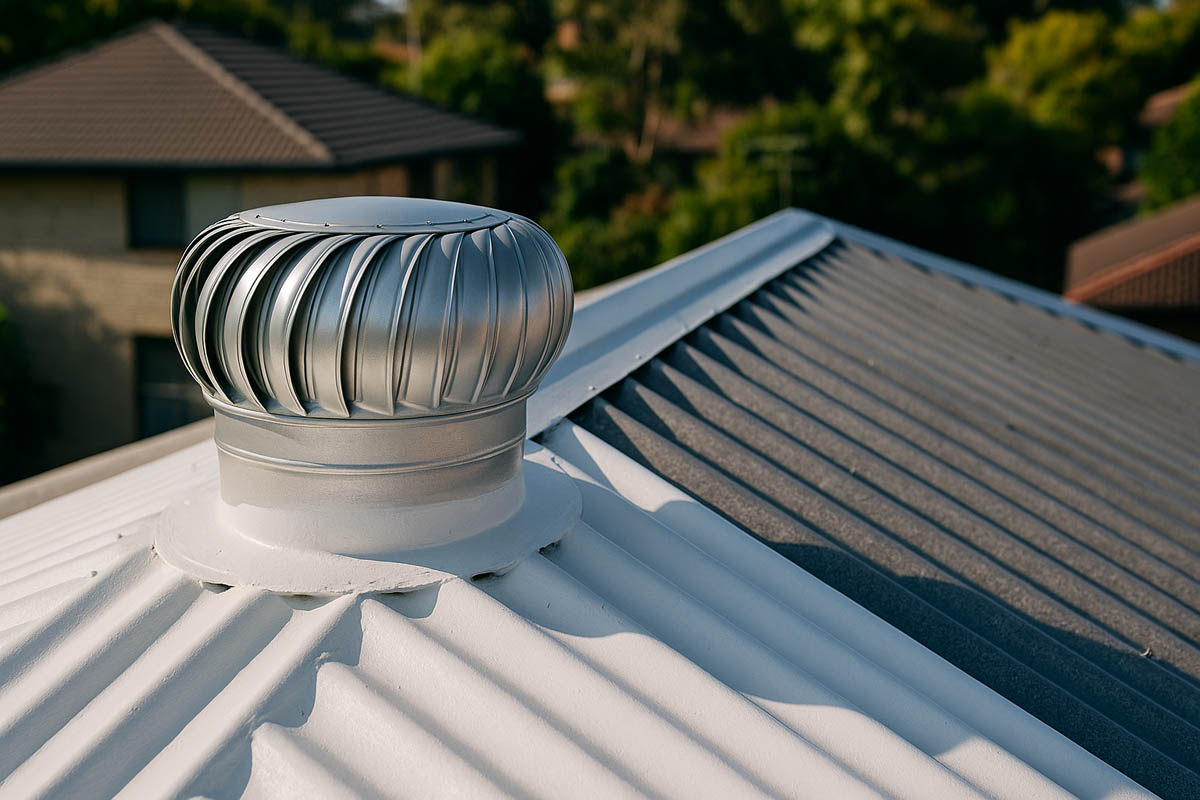The Surprising Benefits of Heat-Reflective Paint for Australian Buildings


Australia’s sunburnt landscape and harsh summer climate are no strangers to most homeowners and builders. With heatwaves becoming increasingly intense and electricity costs rising steadily, there is an urgent demand for energy-efficient solutions that offer both environmental and financial benefits. Among the growing range of sustainable construction methods, heat reflective paint—also known as cool roof coating—has quietly emerged as a game-changing innovation.
Used extensively in commercial and residential applications worldwide, this technology offers numerous benefits, including enhanced indoor comfort, reduced cooling costs, and mitigated urban heat island effects. But how does it work, and is it worth considering for your next project?
What is Heat Reflective Paint?
Heat reflective paint is not your average tin of exterior paint. Sometimes referred to as thermal insulating paint or cool roof coating, this specialty product is formulated with advanced pigments and reflective compounds designed to reflect a large percentage of solar radiation, particularly infrared light, away from a building’s surface.
Unlike conventional paints that absorb heat and transfer it indoors, heat-reflective paints act as a barrier, significantly reducing the temperature of the surface they coat. While traditionally applied to rooftops, these coatings are also suitable for exterior walls, tanks, and even some types of paving.
The primary principle behind its performance is its solar reflectance (albedo) and thermal emittance. Together, these properties enable treated surfaces to remain cooler during peak sun exposure, which in turn maintains a more stable internal environment for the building.
How Does It Work? The Science Behind the Coating

To understand why heat-reflective paint is so effective, it’s helpful to examine the science behind solar radiation and building heat transfer.
When sunlight hits a surface, it carries energy in three primary forms: ultraviolet (UV), visible light, and infrared radiation. Infrared, in particular, is responsible for the majority of heat gain. Standard roofing materials, such as dark tiles or metal, often absorb this radiation, leading to external surface temperatures that can exceed 65–75°C during the summer months.
Heat reflective coatings are designed with unique pigments and ceramic microspheres that reflect this radiation before it penetrates the material. As a result, these surfaces can be 20–40°C cooler than uncoated ones under the same conditions.
According to the U.S. Department of Energy, reflective white roofs can remain up to 28°C cooler than standard dark roofs. A study by CSIRO further confirms that solar reflective coatings can lower surface and sub-surface temperatures while reducing energy use from air conditioning systems.
Key Benefits of Using Heat Reflective Paint

Reduced Indoor Temperatures
One of the most immediate and noticeable benefits of heat reflective paint is a drop in internal temperatures, particularly in buildings with large, sun-exposed roofs. Homeowners often report that rooms beneath treated surfaces feel significantly cooler, even without the use of air conditioning.
This passive cooling effect makes heat reflective paint especially valuable for homes in tropical, arid, and temperate climates, such as those found in much of Australia. For structures with limited insulation or without ceiling cavities, this reduction can be even more dramatic. Some homeowners also combine reflective coatings with roof ventilation options, such as whirlybirds, to further enhance airflow and help release trapped heat in the roof cavities.
Lower Energy Bills
The reduced thermal load on a building also leads to less reliance on mechanical cooling. Air conditioners don’t need to work as hard—or stay on as long—when heat is prevented from entering in the first place.
In commercial settings, where large cooling systems run for extended periods, the savings can be substantial. Studies by institutions such as the University of New South Wales (UNSW) have found that cool roof strategies could reduce peak cooling demand by 10–30%. In households, these savings translate directly into lower quarterly energy bills and less strain on the power grid during peak demand periods.
Increased Roof Lifespan
Roofs are constantly subjected to cycles of heating and cooling, which contribute to material fatigue, cracking, and UV damage. By minimising the temperature fluctuations a roof experiences, reflective coatings help prolong the structural and aesthetic life of roofing materials.
In metal roofs, this can mean less warping or loosening of fasteners. For tiled roofs, there’s reduced cracking and spalling. And because the coatings themselves provide an added layer of weather protection, they also act as a barrier against UV degradation, dirt build-up, and moisture intrusion.
Environmental Benefits
Buildings are a significant contributor to greenhouse gas emissions, with a substantial portion of these emissions stemming from their cooling systems. By reducing energy use, heat-reflective paints offer a low-cost and low-tech way to reduce carbon footprints.
In urban areas, reflective roofs can also help mitigate the urban heat island effect—a phenomenon in which cities become significantly hotter than surrounding rural areas due to the absorbed heat from buildings and roads. A study by UNSW found that city-wide adoption of cool roofs could reduce peak summer temperatures by up to 2°C, improving not only indoor comfort but also public health outcomes.
Improved Sustainability Ratings
For those pursuing green building certifications or aiming to increase their property's sustainability, reflective coatings can positively contribute to NatHERS ratings and even earn credits toward certification schemes such as Green Star and LEED.
Combined with insulation and ventilation strategies, heat reflective coatings are part of a holistic approach to energy-efficient design, and they often represent one of the most affordable upgrades per square metre.
Versatile Applications
While most frequently used on residential rooftops, heat reflective paints are suitable for a wide variety of surfaces:
Metal, concrete, and tiled roofs
Exterior walls of brick or rendered surfaces
Large tanks or sheds
Warehouses, schools, and commercial buildings
Because they come in a variety of colours (not just white), modern heat reflective paints can also be chosen for aesthetic compatibility without compromising on performance.
Common Misconceptions

Despite the growing awareness, a number of myths still surround heat reflective coatings:
“It’s just white paint”
Not true. While white surfaces naturally reflect more sunlight, cool roof paints utilise advanced reflective pigments that can be effective in darker shades as well.
“It only works in tropical climates”
While the benefits are most pronounced in hotter regions, reflective paints can still reduce energy use and enhance thermal comfort in temperate zones, particularly during hot spells.
“It replaces insulation”
Reflective paint is a complementary measure. It reduces the heat that enters, while insulation reduces the rate at which any residual heat is transferred indoors. The two work best together.
What to Consider Before Applying
Before rushing to coat your roof, it’s essential to evaluate a few practical considerations:
Surface Condition: The roof must be clean, dry, and in sound structural condition. Cracks or leaks should be repaired before applying the coating. Some manufacturers recommend using a roof sealer before applying.
Climate Zone: In cooler climates where winter heating dominates, reflective coatings may offer less benefit unless used seasonally or selectively.
Product Quality: Look for paints that have been tested to Australian Standards and rated for high UV exposure and weather durability.
Final Thoughts
As Australia continues to grapple with rising temperatures and energy challenges, innovative building solutions, such as heat-reflective paint, are gaining traction across both residential and commercial sectors. The benefits—lower cooling costs, reduced indoor heat, longer-lasting roofs, and improved environmental outcomes—make this a compelling option for both property owners and builders.
What sets heat reflective paint apart is its simplicity. With relatively low installation costs and minimal disruption, it delivers measurable results for years to come. Whether you're building a new home, upgrading an industrial facility, or retrofitting an older roof, it’s a brilliant addition to any passive cooling strategy.

🔗 Further Reading & Resources
CSIRO – Solar Reflective (Cool) Coatings
https://research.csiro.au/infratech/wp-content/uploads/sites/38/2024/12/4409_Solarreflectivecoolcoatings_WCAG.pdfU.S. Department of Energy – Cool Roofs
https://www.energy.gov/energysaver/cool-roofsUNSW – Are Cool Roofs the Future for Australian Cities?
https://www.unsw.edu.au/newsroom/news/2022/06/are-cool-roofs-the-future-for-australian-cities-THERMOBOND Heat Reflective Paint
https://solutionindustries.com.au/Paints/Roof-Coatings/thermobond-heat-reflective-paint-save-on-your-power-bill-621htm.htm